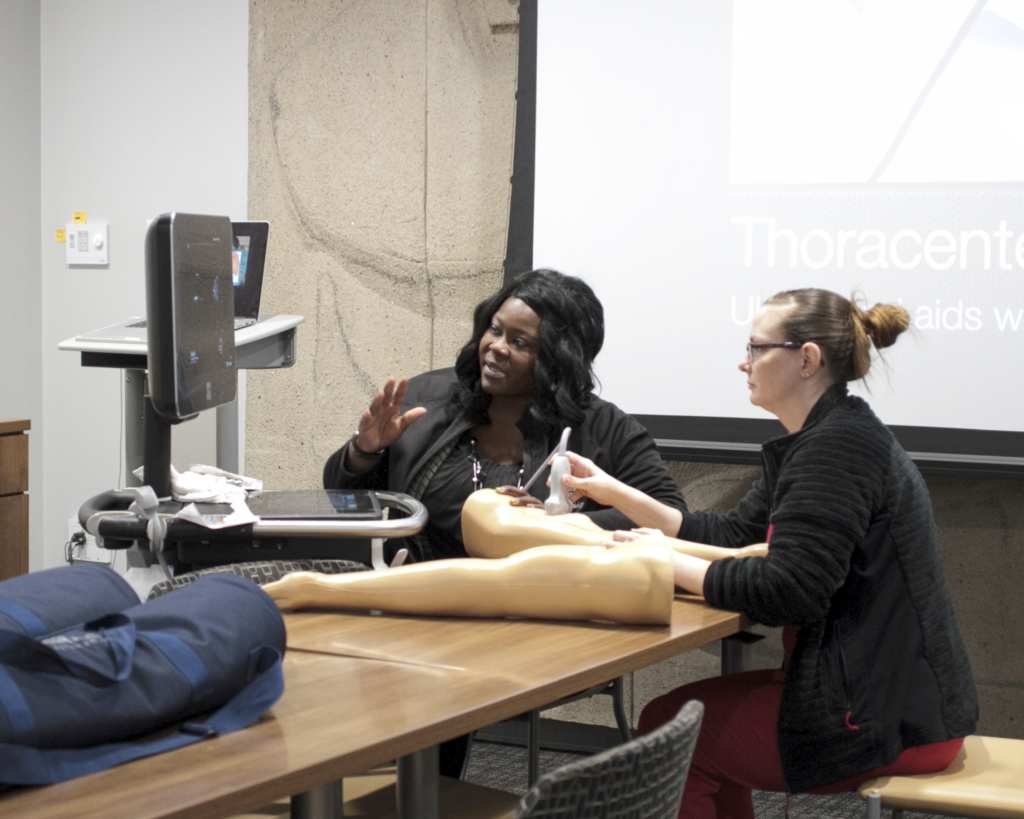Critical Care Ultrasound (CCUS)
Ultrasonography has been demonstrated to be particularly valuable for critically ill patients in the intensive care unit (ICU) where life-threatening conditions such as cardiac tamponade, severe hypovolemia, cardiac failure, hemoperitonium, and tension pneumothorax can be rapidly distinguished non- invasively in hemodynamically unstable patients, allowing immediate institution of appropriate life-saving interventions. In addition, ultrasound has been crucial in procedural guidance, improving procedural success and decreasing complications. Indeed, critical care providers must be able to make critical time sensitive diagnoses and perform lifesaving procedures accurately during acute patient decompensation. In recognition of this, national critical care societies and training oversight groups have advocated for increased training of ultrasound in critical care training programs and increased availability of ultrasonography for bedside use in the ICU.
The Accreditation Council of Graduate Medical Education now requires that an ultrasound be available in critical care fellowship training programs however best evidence methods to incorporate critical care ultrasound education into existing programs are limited. Critical care training programs have many deficiencies in their ability to incorporate critical care ultrasound into their training programs. While a number of recommendations have been proposed for training, there has been limited standardized approach to implementation of a Critical Care Medicine (CCM) ultrasound curriculum into existing training programs.

Faculty Development Scholar Award: Critical care ultrasound training program development (2015-2018)
Funded project to develop and implement a critical care educational program in the surgical intensive care unit. Intended goal: bridge the knowledge and skill gap with a standardized ultrasound training program for critical care practitioners (Aim 1), demonstrate that this program increases the acceptance and proper utilization of this technique in critical care (Aim 2), and demonstrate that this training results in improved patient safety, and decreases utilization of hospital resources (Aim 3).
